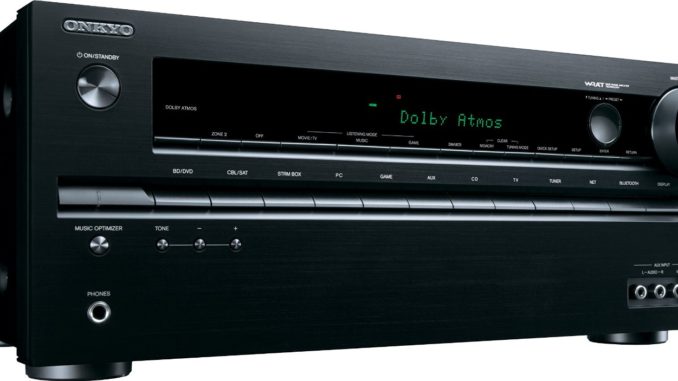
The new TX-NRx4x line of AV receivers from Onkyo happens to be particularly interesting, especially the manufacturer's entry-level model. So, let´s examine it - the Onkyo TX-NR545.
Onkyo TX-NR545
-
Sound Quality - 80%80%
-
Features - 85%85%
-
Ease of Use - 85%85%
-
Build Quality - 85%85%
SUMMARY
Onkyo TX-NR545 is not only content to do better than its predecessor – it´s running a risk of overshadowing its bigger brother.
Excellent Multimedia and Network support.
Dolby Atmos.
Improved AccuEQ calibration.
Good Price/Performance ratio.
No Dolby Atmos ceiling speaker management.
No video processing.
Lacklustre User-Interface.
This is a model that welcomes a number of new features this year: AKM AK4458 DAC, Dolby Atmos, Hi-Res Audio certification, AirPlay, HDMI 2.0 with HDCP 2.2 connectivity management. Could this be a good year for Onkyo?
Design, Build Quality and Connectivity
For the new TX-line, excluding TX-RZ800 and RZ900, Onkyo is keepin the proven design it has had for the last few years, with clean lines and decent build quality. On the front we find a row of buttons dedicated to changing source and navigating through menus, and an LCD display on the top. The lower part hosts audio / video analog inputs, microphone input and a headphone output.
At the rear, the TX-NR545 offers six HDMI inputs and 1 output, all of the HDMI 2.0 standard with HDCP support and HDMI 2.2 on inputs 1-3, assuring full transparency on 4K / 60 Hz signals with a 4: 4: 4 chroma sub-sampling, making it fully compatibie with future Ultra HD Blu-ray players. There are also two Component inputs, four Composite inputs, two optical digital inputs and one coaxial, 8 analog RCA audio inputs, two Subwoofer Pre-outs, a Pre-out for Zone 2 in stereo, a USB port, an Ethernet port, and 2 antennas for WiFi and Bluetooth.
Several new features are also introduced on the TX-NR545, including the transition from 5.2-channel to 7.2-channel, a change that is accompanied by the integration of Dolby Atmos in addition to the usual HD audio formats. This allows you to go for an installation with a 5.1.2 configuration with 2 speakers for height effects added to the ceiling or, more conveniently, placed on top of the front speakers. It is of course also possible to use a more traditional setup with two surround back speakers in a more traditional 7.2 configuration, or use the extra channels for Zone 2 in stereo.
The power amplifier remains the same as on the previous model (115 W / channel @ 6 ohms), but an interesting change has been made to the preamp. Onkyo has replaced the old trustworthy Texas Instruments Burr-Brown DACs for the new AK4458 DAC from Asahi Kasei Microdevices Corporation. This chip is designed for integration with an AV amplifier, as is the case with Onkyo, but also for other devices such as network audio players, audio DACs, audio interfaces, and so on. It is also one of the reasons Onkyo is wearing a Hi-Res Audio logo this year since the AKM AK4458 chip is theoretically able to support PCM up to 768 kHz and DSD 11.2 MHz.
Onkyo also uses a separate amplifier section (not balanced) to generate a more stable supply of current, which should provide a more precise and dynamic sound. More on the sound later, but the power consumption has increased to 60 W / 4.3 A compared to TX-NR535's 55 W / 3.2 A.
TX-NR545 User Interface
Onkyo has made no significant changes to the user interface and it is still classic Onkyo, frugal and spartan. In addition to the main menu, which gives access to all the amplifier settings, we find a secondary OSD that opens as a pop-up window where you can access some quick settings, like tone, DSP, and more. We also noticed a lack of video settings/processing, but considering the price it´s forgivable.
Improved AccuEQ Calibration
According to Onkyo, the AccuEQ is improved compared to last year, but the number of measurement points is still limited to a single position, while some of the TX-NR545‘s competitors have more. On the other hand, Onkyo seems to have taken note of the criticism on earlier versions of AccuEQ. The 2015 version is quite interesting, and the main difference compared to the older iteration is that the new AccuEQ takes more time to make the measurements, with two test tones (the first measuring level, distance and crossover, the second to eliminate standing waves) from each speaker in order to refine the results. Onkyo also fixed the lack of equalization on the subwoofer channel, something that is highly appreciated.
In the measurement position, results are quite satisfactory for the front, center and surround channels, with the exception of a slightly too high crossover frequency for the subwoofer. Other than that, the levels and frequency balance was spot on. Onkyo also gives you the choice not to apply any EQ on the front channels to avoid coloring the sound. This is particularly appreciated when playing music.
Sound Quality and Listening Test
The biggest change in Onkyo’s new range this generation is the change of DAC. They abandon the classical Burr-Brown and opts for a AKM AK4480 on the TX-NR545 and higher models. The question is if we can hear any improvement?
The weak point of the Onkyo AV receivers has often been the preamp being a bit feeble, and it seems that Onkyo prefer to focus on more muscle in the amplifier section - which undeniably is a nice quality in a 'Gung Ho Action Flick Home Theater' - but it can be a bit too 'unpolished' at times, even though it probably also contributed to the success of the range over the years. Incorporating the AKM DAC (one on each channel) should hopefully add that 'polish' to the overall experience, something the listening test will reveal.
Longtime Onkyo fans can rest assured regarding the amplification as we stay on familiar ground. The Onkyo TX-NR545 performes as expected during Movie Night, with the typical Onkyo characteristics of power, generous dynamics and big sound. As the amplifier section is more or less the same as last year, the improvement comes mainly from the preamp section, but without any really significant difference compared to previous generations. It just adds some improvements, especially in the subwoofer channel.
Despite the dynamic generosity and exacerbated sense of power, the lower frequency spectrum on Onkyo's entry level models has always had a tendency to overpower the rest of the frequency range. The improvement was particularly noticeable when watching the monster rampage in Cloverfield. The TX-NR545 managed to retain the powerful and imposing character of the monster, and impacts exuded a sense of control, and by extension a firmness that was better than before. It´s still in need of some minor adjustments though, and perhaps a little more subtlety.
Another contribution of the new DAC comes from the higher frequency spectrum. Onkyo has made some small improvements when it comes to clarity and precision, and the midrange is slightly less muffled. A minor improvement that may not be very noticable when watching movies, but it helps to give a bit more credibility when playing music in Pure Audio mode, particularly when you turn off the equalization on the front channels.

Finally, we end with the last major feature of the TX-NR545: Dolby Atmos. For some it may be an argument of choice, for others absolutely unnecessary considering the scarcity of compatible titles, although the Ultra HD Blu-ray format may sway some to adopt the newer formats when it is released before the end of this year (2015). The results are nevertheless highly dependent on the configuration of your room and speaker layout, although it´s worth mentioning that the TX-NR545 only support height effect speakers, not ceiling speakers.
Network and Multimedia
Onkyo amps have always been at the forefront when it comes to multimedia support, and this is evident by the compatibility of the TX-NR545; MP3, AAC, WMA, WMA Lossless, FLAC, ALAC, WAV, LPCM, MLP, Ogg Vorbis, Dolby True HD and DSD 2.8 / 5.6 MHz. In addition to playing files from a UPnP network, Onkyo amps are currently the only NTSF compatible (NTFS require manufacturers to pay royalties to Microsoft) and you can use USB sticks or external harddrives with a capacity greater than 4 GB. A big bonus is the long-awaited arrival of AirPlay, which should make users of iDevices very happy.
Navigating menus is easy but still rather crude. Fortunately the title and album art display help to pretty things up a little. The ability to navigate the menus easily also applies to the display on the front panel.
Conclusion
Onkyo TX-NR545 is not only content to do better than its predecessor – it´s running a risk of overshadowing its bigger brother, the TX-NR646, especially since both of them lack video processing and share the new AKM DAC. If your budget is limited, the choice seems obvious if your room is under 300ft². When it comes to performance, the TX-NR545 stays true to what has always made Onkyo’s AV receiver successful in the home theater market with its powerful sound, great sound image, and generous amount of dynamics. In this generation we like the changes made to the AccuEQ calibration system, but especially the better quality preamp. Although some improvements are still needed, it has better bass management, which now is less likely to overpower the improved high frequency spectrum. So, to answer the question; yes, Onkyo is going to have a good year.
GET IT ON eBay!
- FEATURES
- SPecIFICATIONS
| Amplifier | |
| # Channels | 7.2 |
| Power Watts/Ch (6 Ohms 1kHz, 1 Channel Driven, FTC) | 115, 0.9% THD |
| Power Watts/Ch (8 Ohms 20-20kHz, 2 Channels Driven, FTC) | 65, 0.7% THD |
| WRAT (Wide Range Amplifier Technology) | ✓ |
| H.C.P.S (High Current Power Supply) | ✓ (Massive High Power Transformer) |
| THX Certified | - |
| Continuous 6 Ohms Rated | ✓ |
| Certified 4 Ohms Performance | - |
| Discrete Output Stage Circuitry | ✓ |
| 3-Stage Inverted Darlington Circuitry | - |
| PUSH-PULL Design | ✓ |
| Independent Block Construction (Amp/Preprocessor) | - |
| High-Grade Toroidal Transformer | - |
| Independent Power Supply | ✓ (x2) |
| Bi-amp Capability For Front | - |
| Processing | |
| Dolby Atmos | ✓ |
| 32-Bit Digital Signal Processing Engine | ✓ |
| Dolby Decoder | Atmos, True HD, DD Plus |
| DTS:X | - |
| DTS Decoder | DTS-HD Master Audio |
| ONKYO GAME Surround Modes | ✓ (Rock, Sports, Action, RPG) |
| VLSC for Noiseless Audio Processing | - |
| THX Processing Mode | - |
| AccuEQ Room Calibration | ✓ (Advanced) |
| Phase-Matching Bass Boost | ✓ (for Deep Bass and Clear Mid-Range) |
| Direct/Pure Mode | - / ✓ |
| Pure Direct Analog Path Mode | - |
| Advanced Music Optimizer | ✓ (Bluetooth Included) |
| 384K/32 Bit DACs | ✓ (Asahi Kasei AKM4458) |
| 192K/24 Bit DACs | - |
| 192K/32 Bit DACs | - |
| isf Certified Calibration Control | - |
| Connectivity | |
| Audio I/O | 8 / 0 |
| Phono Input | - |
| Digital Audio IN (OPT/COAX) | 2 / 1 |
| Composite Video I/O | 4 / 0 |
| Component Video I/O | 2 / 0 |
| Front Panel HDMI | - |
| Front-Panel A/V | L / R / V |
| Front-Panel Optical | - |
| USB Input | ✓ (Rear) |
| HDMI I/O | 6 / 1 |
| HDMI 4K/60 Hz- Capable HDMI Terminals | ✓ (HDR Support) |
| HDCP 2.2 Copy-Protection Compatibility | ✓ (3 in / 1 out) |
| HDMI Support for High Dynamic Range | ✓ |
| HDMI Support for 3D, Audio Return Channel and CEC | ✓ |
| HDMI Support for Deep Color, x.v.Color, LipSync | ✓ |
| HDMI Support for DVD-Audio, SACD, Multichannel PCM | ✓ |
| InstaPrevue Input Source Prevue | - |
| MHL for Mobile Device Connection | - |
| Composite to Component Video Upconversion | - |
| Analog To HDMI Upconversion | ✓ (from 480i/576i) |
| 1080p Upscaling | - |
| 4K (up to 4096 x 2160) Upscaling | - |
| 4K Passthrough | ✓ |
| Analog Pre-Outs | Subwoofer (x2) |
| XLR Pre-outs | - |
| 18mm Pitch High Grade Pre-outs | - |
| Speaker A/+B | - |
| Powered Zone 2 | ✓ |
| Powered Zone 3 | - |
| Zone 2 Line Out | ✓ (Fixed) |
| Zone 2 Video Out | - |
| Zone 2 Digital to Analog Audio Conversion | ✓ (NET, USB) |
| Zone 3 Line Out | - |
| Whole House Mode | - |
| Made for iPod, iPhone, iPad | ✓ |
| Airplay | ✓ |
| Supports Onkyo Remote App | ✓ (iPod touch/iPhone and Android-Powered Devices) |
| Internet Radio Capable | ✓ (Pandora, Spotify, Sirius, Slacker, TuneIn, Deezer) |
| Streaming Audio From PC / Network | ✓ (DLNA, Home Media) |
| Hi-Res Streaming Audio Formats | ✓ (MP3, WMA, WMA Lossless, FLAC, WAV, Ogg Vorbis, AAC Stereo, Apple Lossless, DSD 5.6 MHz, LPCM, Dolby TrueHD) |
| Streaming Audio From USB memory | ✓ |
| Wireless Network | ✓ (Wi-Fi-Certified) |
| Bluetooth | ✓ (Built-in) |
| PC Input (15 pin D-sub) | - |
| Integration Access | |
| RS-232 | - |
| IR Input | - |
| IR Output | - |
| Ethernet | ✓ |
| ONKYO-RI System Control | ✓ |
| RIHD (Remote Interactive Over HDMI) | ✓ |
| 12V Trigger | - |
| Miscellaneous | |
| Pre-Pro/Learning Remote | - / ✓ |
| On Screen Remote Programming | - |
| Hybrid Standby Function | ✓ (to Reduce Power Consumption) |
| Smart Grid-Ready | ✓ |
| Auto Speaker Calibration W/Mic. | ✓ (AccuEQ - Advanced) |
| OSD Out | ✓ (Advanced "Home" GUI) |
| Solid Aluminum Front | - |
| Transparent High-Grade Speaker Terminals | - |
| Detachable AC Cord | - |
| Warranty | 2 YEARS |

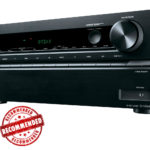
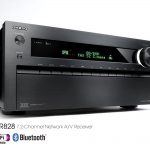
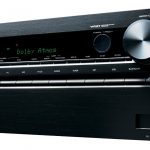
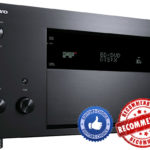
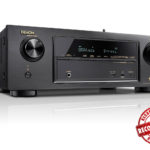
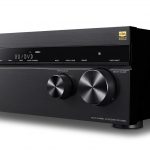
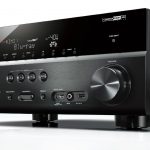
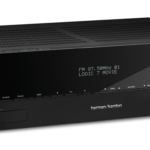
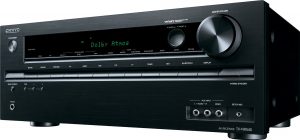


looking at an Onkyo TX-NR545 AVR. i cant find anything in the manual or web info if it has audio volume leveling for soft and loud noises.
If you’re referring to the Late Night listening mode, you should be able to find it in the Quick Setup Menu (Q on the remote). It makes smaller/softer sounds more easily heard. It is useful when you need to reduce the volume while watching a movie late at night for example (hence the name). It only works with Dolby Digital, Dolby Digital Plus, and Dolby TrueHD sources though. Hope that helps.